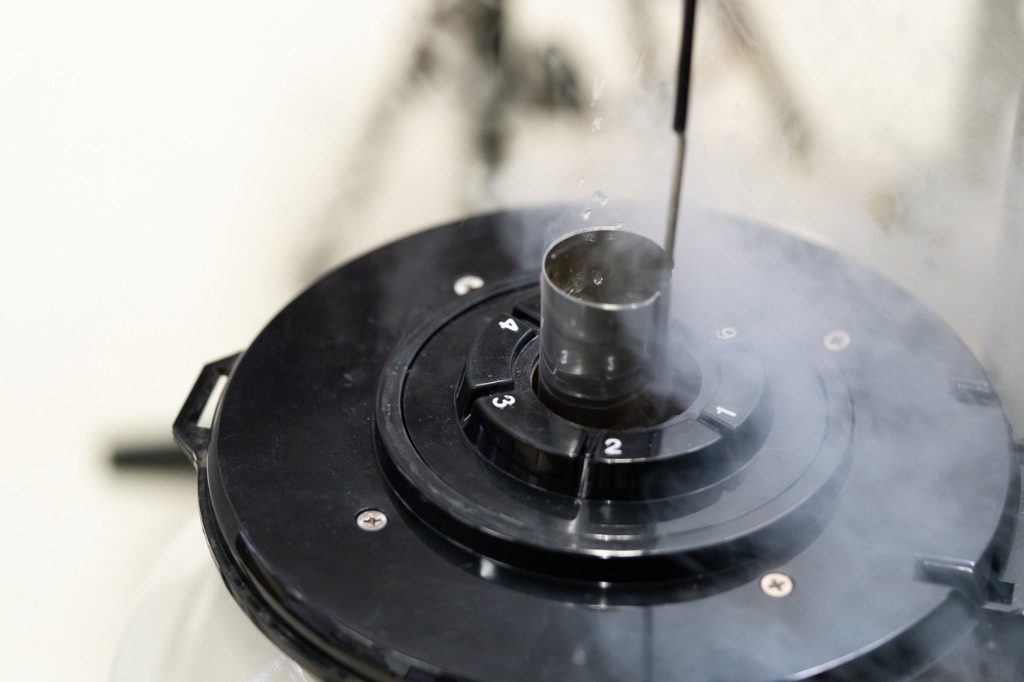
Cryopreservation is the process of freezing tissue. In the case of sperm cryopreservation, a man’s semen is frozen for future use. A sperm cryobank is a facility that collects, stores and freezes the specimens. A donor sperm bank, is a bank which collects and freezes the sperm of anonymous donors. This can later used by women or couples who would like to have a child but cannot do so by traditional means.
A licensed sperm bank can provide a selection of specimens that have been screened and tested and are known to be safe and free from disease.
There are two reasons someone might choose to use donor sperm. The first reason is when a single or gay woman would like to conceive a child naturally, using her own eggs. The second reason is the case of a couple struggling with male factor infertility that can not use the husband’s sperm.
Generally, you will consult first with your gynecologist, and make the decision that insemination with donor sperm is appropriate and discuss the process for the insemination.
At this point you will contact a donor sperm bank to discuss prices and look through their roster of available donors. Since frozen sperm can be shipped all over the country you do not have to limit yourself to sperm from your local area. You can search donor banks throughout the country. The Internet can be a useful source of information at this point in your search. Most donor banks will provide brochures or videotapes with a great deal of information on their bank’s procedures, cost and donors.
Once you have determined what bank you want to work with you then can ask for information on specific donors. Generally sperm banks charge a nominal amount for basic information and more significant amounts for lengthy forms with detailed information about a donor. Although most banks won’t provide a photo of the donor, many have “matching” services where the staff will look at photos and try to find the donor with physical characteristics that most resemble the baby’s father. Again, each bank has set fees for each service it provides so you should discuss this with the banks prior to choosing one.
Once you have selected a donor, you pay the bank and the vials are shipped to the ob/gyn who will be doing the insemination. Many times individuals choose to purchase more vials then they will currently be using so that, should they decide to initiate an additional pregnancy in later years, they will have the same donor sperm available.
If you are purchasing sperm from an accredited sperm bank the process is extremely safe. Sperm banks, by law, must be exceptionally thorough in screening out donors who have HIV, hepatitis, and sexually transmitted and genetic diseases. Banks are required to quarantine all specimens for six months until a second blood test can be run on their donor to insure that the samples are disease free. Only then can specimens be released.
An interesting thing to note is that often a user of donor sperm will know significantly more about the donor’s health and history than they might have known about a potential partner’s.
Sperm banks are licensed and accredited, although requirements regarding accreditation and licensing vary from state to state (some states do not require any type of licensing). There are two national licensing programs that are considered to be the most thorough and stringent: The New York State Department of Health and The American Association of Tissue Banks.
Beyond licensing, which is clearly the most important factor; banks differ in their approach, personalized service and roster of donors. You need to do research to find the bank with which you the feel most comfortable working.
Providing your own donor is considered “surrogate parenting” and is legal in most states. However, some states require a 6-month waiting period for the sperm to be held in a holding tank prior to release. That is, they will not release any of your donor vials until your donor has completed the second set of blood tests, six months after the first set were done. The reason for this is fairly straightforward. Any specimens in a laboratory’s bank cannot be released until a second blood test, (done after a 6-month quarantine period) returns negative and proves that no infections were in the blood at the time the specimens were produced.
Although donor banks in certain states do not require a six-month holding time it is recommended that you do so in any case. If you choose to provide your own donor, you will have a larger range of choice regarding the sperm bank you use. You do not need to use a donor sperm bank. Any sperm bank, even those set up to bank a man’s own sperm for later use, can provide this service for you.
Banks vary widely in the services for which they charge and the amounts that they charge and you will need to call specific banks to get their fee schedules.
